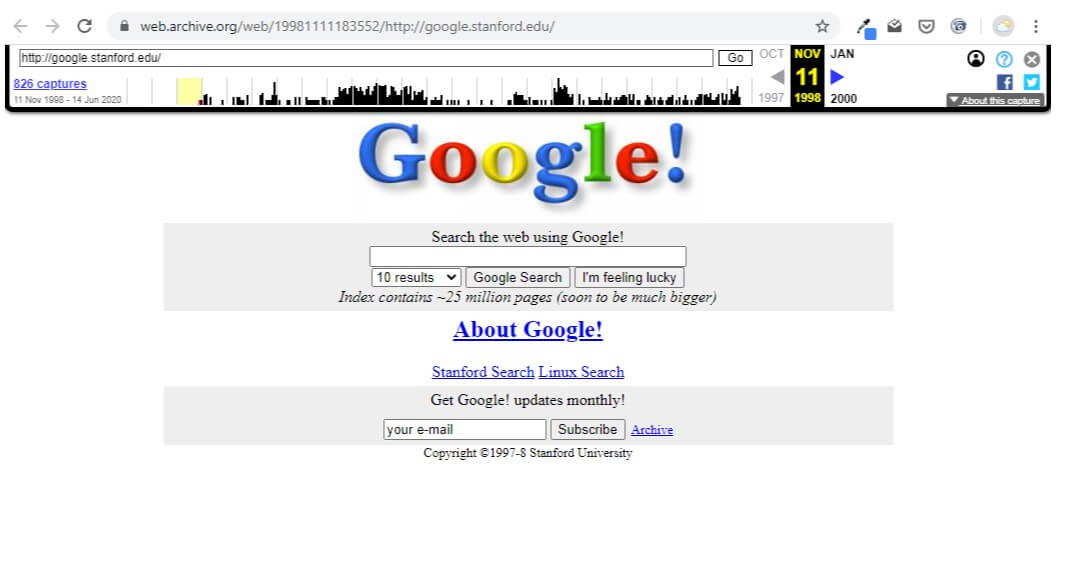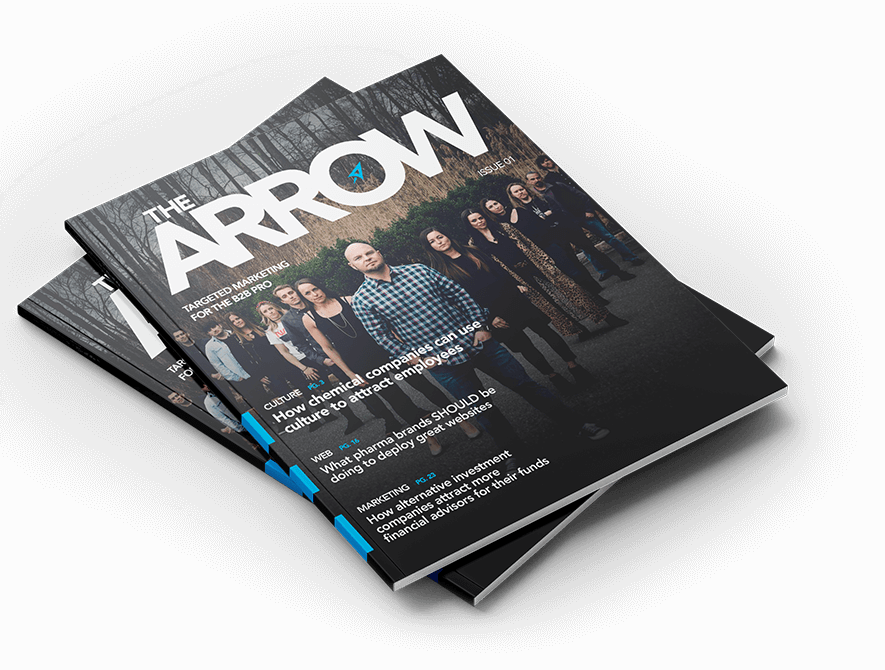5 Ways To Build a Better Website Strategy
Chris Mulvaney is the CEO of CMDS. I make things... I’m the creative entrepreneur with passion for (re)making brands and inventing solutions to problems no one knows exist.
Developing a sound website strategy is about finding that intersection between what your customers want and where your brand can create better value than the competition.
It’s clear that having a better sense than your competitors for what your customers want is a huge advantage. In fact, the goal is to deliver on what your customers want before they even ask. That is true customer insight.
If superior insight is the goal, how do you get it? Below are five simple ways any brand can take to gain an advantage over the competition. But, since most businesses are too busy to make the effort, the ball is in your court.
5 Ways A Website Strategy Can Help You Pull Ahead of Your Competitors Online
Are you obsessed with checking out the competition? Don’t lie. You stalk their website on a regular basis, don’t you? It’s ok. At CMDS, we’re always looking at the websites of our client’s competitors. This is not only okay, it’s exactly what you should be doing! Doing so allows you to see how they’re displaying their content, how often they’re updating their site, and how they are using visual design to communicate their message.
But, instead of letting your competitor’s website make you feel like you’re two steps behind, use this insight to slingshot your brand to the next level.
1. Get Your Website Design Unstuck
You probably already know that the internet is a crowded arena. But, did you know that there are close to 2 billion websites out there. If your website is outdated, the majority of users will not trust you and go elsewhere – which is really no surprise given the competition.
Within milliseconds (0.05 seconds actually), users will already have formed an impression of what they see on your website. Do they like what they see? And will they trust you? Or does your website give the impression that it is not active? And will they leave?
Chances are likely that the website strategies that worked well for you a few years ago no longer deliver the results you need. Dramatic changes in technology have unearthed a major gap between old website design and what consumers expect today. In short, many website designs are stuck in the past using designs that were created for a different era. And now they’re not keeping up pace, literally.
So, how do you stand out from the crowd and gain that competitive edge that places you at the top?
Grabbing their attention is key to your success, which is why investing in a quality website design is essential for the longevity of an online business. But remember this: even if your site looks the part, if the code behind the scenes is a mess, you will be penalized.
To the unaware, it might seem that since visitors don’t see code, it doesn’t matter. Believe it or not, while that flashy site might look good on the outside, search engines, like Google, see the true picture: a cute, fluffy puppy that became a part of your family during quarantine but then tears up your home when you go back to the office 14 weeks later.
Messy coding will not only get penalized by Google, but it will also slow down your website page speed, which is very important to a user’s experience. A single second delay in your website loading time can cost you precious conversions.
In fact, Walmart found that for every 1 second improvement in page load time, their conversion increased by 2%. The truth is that potential customers will lose interest if you make them wait too long.
Don’t keep them waiting a moment longer.
2. SEO S.O.S.
Have you ever been stuck on page two? Even if you have an amazing looking website, it may not perform as well as you had hoped because of outdated search engine optimization (SEO) efforts…or a lack thereof. If your website hasn’t been updated for a while, your SEO is most likely out of date and possibly even in violation of Google’s guidelines.
If you’ve witnessed your rivals top the rankings you might be wondering what they’re doing that you’re not. Back in the “black hat” days (just a few years ago), sketchy marketing techniques such as keyword stuffing, were used to get a website higher in search results. According to Google, “Keyword stuffing” refers to the practice of loading a webpage with keywords or numbers in an attempt to manipulate a site’s ranking in Google search results. Often these keywords appear in a list or group, or out of context (not as natural prose). Filling pages with keywords or numbers results in a negative user experience, and can harm your site’s ranking.
If your website ever used these techniques and has not been updated, you may be getting hit with the infamous Google Violation.
When it comes to search engine optimization today, adding quality, keyword-driven content (blogs, whitepapers, downloadables) is key. Fresh content that uses keywords appropriately not only makes it appealing to search engines, but also users who are reading your content.
SEO is constantly changing. If you can stay on top of new techniques and trends before your competitors, you’ll have a better chance of taking the lead in organic search results and providing a stronger user experience.
3. User Experience to the Rescue
Any business leader looking to understand what it really takes to win in their industry’s ruthlessly competitive market will benefit from knowing how to master user experience (UX).
People love websites with a good UX such as:
- Optimal Page Speed: Ideally, your page should load in less than 3 seconds and users should be able to interact within milliseconds.
- Usability: Your website should be intuitive to users on how to navigate each page and find the information they need.
- Clear Calls to Action: From colors to placement, a clear call to action is essential to encourage the user to make the next step. Leave them wondering what to do and they will most likely go somewhere else.
- Responsive and Mobile Friendly: Technology is always evolving. Websites must be part of this evolution. Being optimized for mobile devices is one of the most valuable ways to provide a strong user experience.
Providing a great UX leads to better engagement with users. It’s all about creating a positive connection between a user and a brand. We know that’s true. And now Google is giving it the attention it needs.
Have you heard? Google just recently began factoring in user experience into its search results as of June 2021. Through the Google Page Experience Update, the search giant now ranks websites based on quantifiable metrics such as speed, mobile-friendliness, responsiveness, safe browsing, no intrusive pop-up windows, and more. These factors are what Google refers to as Core Web Vitals.
Google cited internal research showing that users prefer websites that have a good page experience. But, it’s not the only factor in search rankings; websites will still be ranked based on providing the best information. “Great page experience doesn’t override having great page content. However, in cases where there are many pages that may be similar in relevance, page experience can be much more important for visibility in search.
4. Accessibility – Give Them What They Want Where They Want It
As we’re all aware, shopping behavior has changed dramatically over the years. From the boom of e-commerce (online shopping via computer) to the growth of m-commerce (mobile commerce that focuses on purchasing via mobile devices) consumers are more reliant on digital devices more than ever. Plus, now even social media sites including Facebook, Twitter, and Instagram, have introduced “buy” buttons which allow shoppers to make a purchase without having to leave the platform.
But it goes beyond buying on social media. Consumers want to be part of an experience and they want faster purchases…but just as importantly, they want convenience.
Give them what they want where they want it: desktop, social media, tablet, smartphone.
M-commerce is expected to change consumer shopping habits and become a major channel for future shopping. Business Insider gives us some insight in their recent article, “Rise of M-Commerce: Mobile Ecommerce Shopping Stats & Trends in 2020.”
“As app usage continues to grow, it will be a major contributor to sales growth, especially with Millennials and Gen Zers holding massive spending power. These tech-savvy consumers have the ability to boost volume, as they’re more likely to do a wider share of shopping on their smartphones.”
At CMDS, we had the opportunity to help a client develop a custom website application which allowed them to reach new customers in new ways. Their consumer-friendly portal now serves as a functional layer on top of their database for distributors. Diverse clients like Alba are now beginning to recognize that traditional approaches to website designs just aren’t keeping pace with the speed of their markets any more.
From mobile apps to web applications, accessibility is key to stay ahead of the competition.
5. Website Maintenance Matters
The evolution of website design and SEO is far from over; therefore, we believe that website maintenance is invaluable. If you fail to perform regular web maintenance, you risk losing out on countless benefits including improving page speed, identifying security holes before they become a risk, growing your content library, and leveraging new features.
Here’s a fun experiment: Take a trip down memory lane and visit the Wayback Machine. Take a look at some of the late ’90s websites and compare them to today.

Google circa 1998

Google circa 2020
Major difference, right?! Even though the basic functionality is similar on both versions, the updated design is much more inviting. As you can see, web design has come a long way over the years. As technology changes, web strategies, design, and user experience also need to change. Because, surprise – your customers and markets are also going to keep changing.
One way to stay on top of these changes and spot potential problems is by paying attention to website analytics. Being proactive by using data allows you to stay ahead of the curve and make the necessary changes before your website (and brand) suffers any penalties.
Data can be a source of inspiration for innovation, not just a source of information for validation.
At CMDS, we love data. And when you combine data with user experience, that’s where the magic happens. Together, data and a consumer’s experience both play a powerful role in telling us a story about what is happening, why it’s happening, and how we can build on it or make it even better: better products, better services, and a better website to deliver your message.
Gain the Competitive Advantage with a Strong Website Strategy
Is your website strategy better than the competition?
Find out more about how your brand can gain true customer insight to capture all the attention online. Schedule a free consultation with one of our digital marketing experts at 732.706.5555. We’ll help you keep your website strategy moving as fast as your business and gain the competitive edge today.




